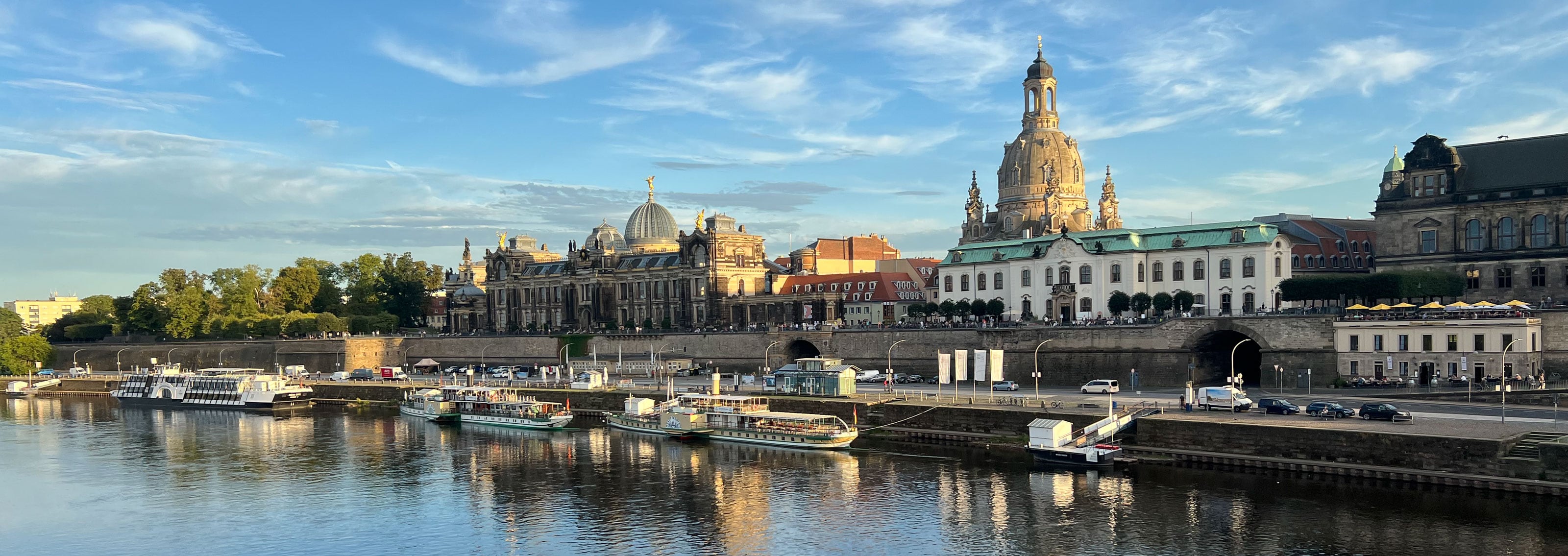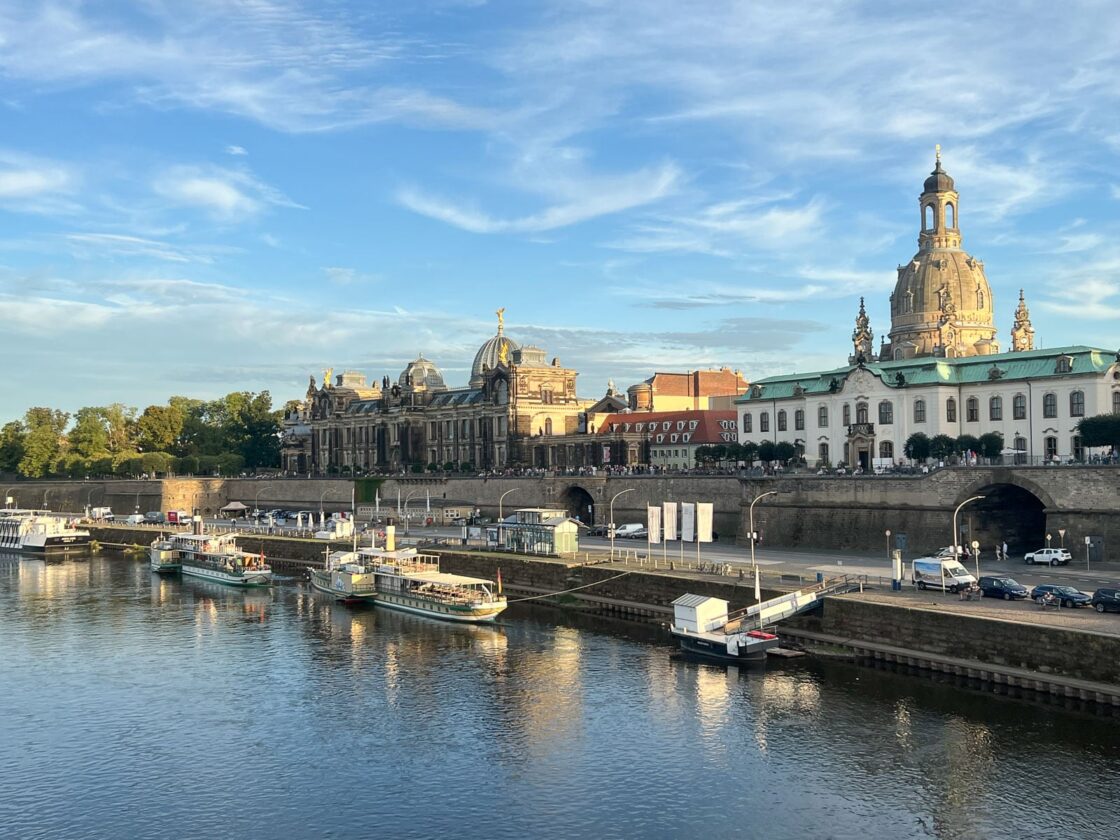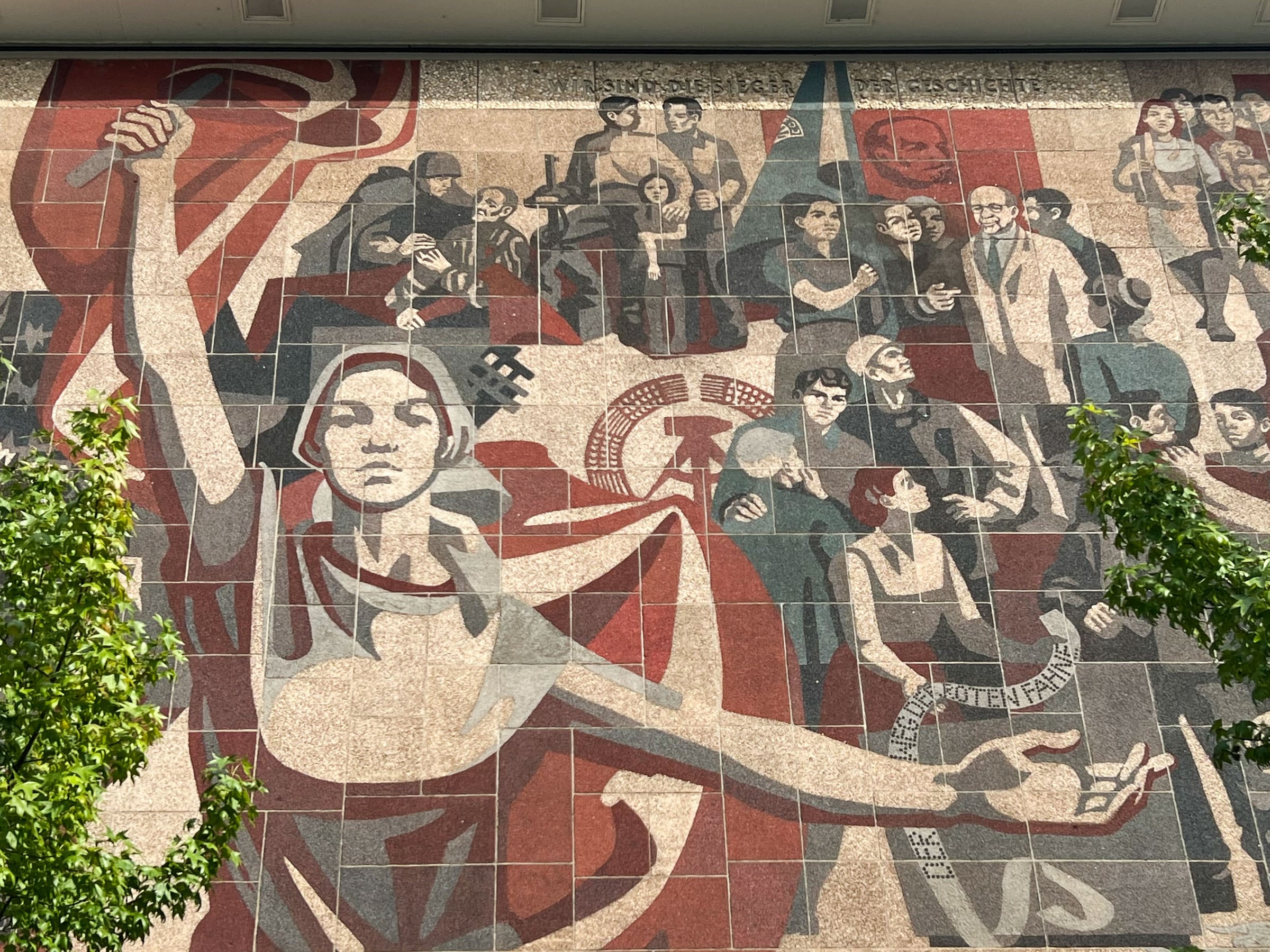Leaving Poland for Germany, our first stop was the eastern city of Dresden. It’s on few Americans’ tourist itineraries (unless they happen to be traveling from Berlin to Prague). That’s a shame, because Dresden has some first-rate art museums and a rich—albeit troubled—history. During our week there in an apartment in a quiet residential area, we came to like the city very much.
Dresden is the capital of Saxony, one of the states that joined together in 1871 to form modern Germany. Before that, Saxony was its own kingdom, and Dresden was its showpiece. The old city on the south side of the Elbe River was home to large Baroque-style palaces, gardens, churches, and museum buildings from the 1600s and 1700s.
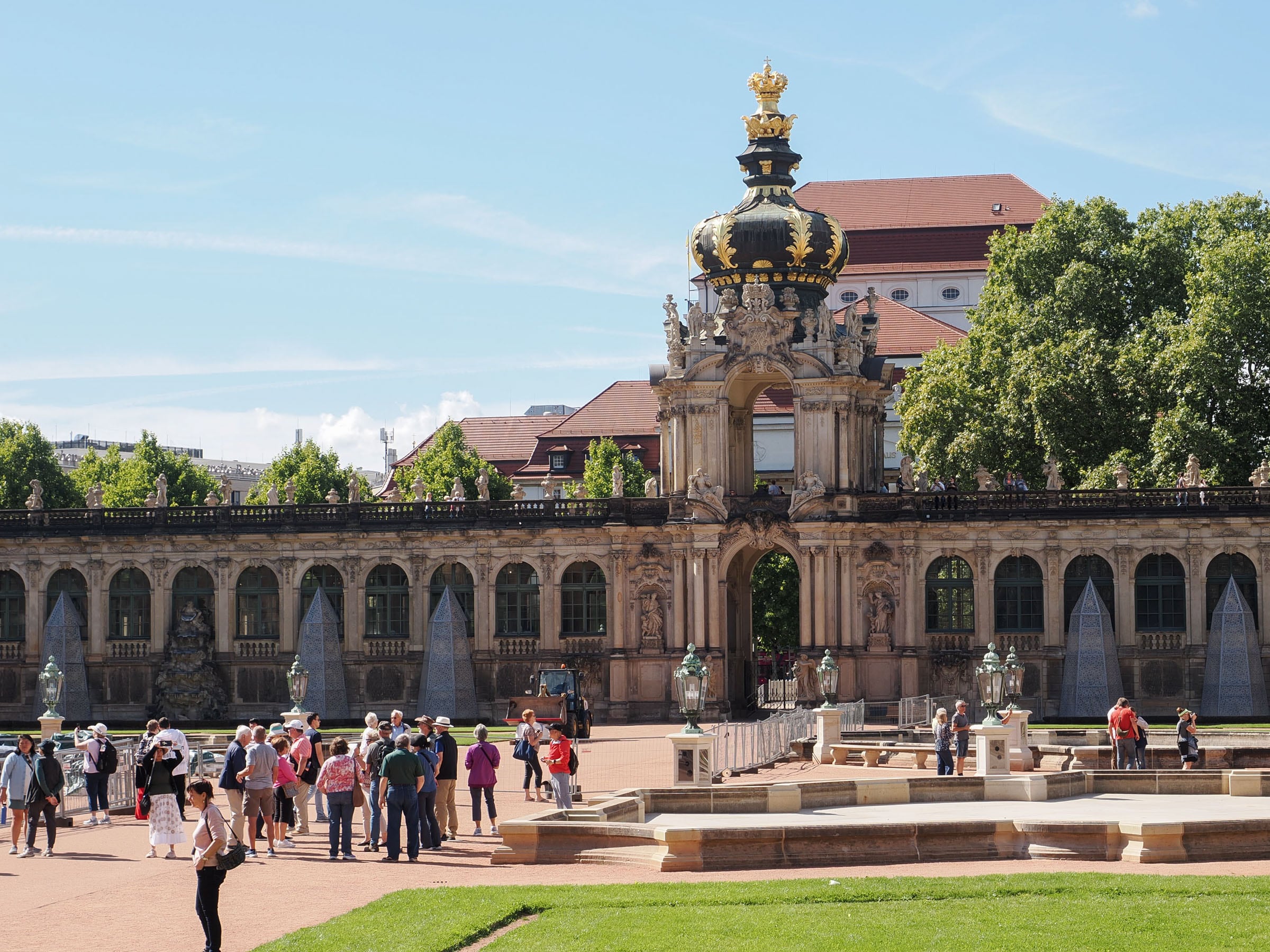
In the final months of World War II, a massive British and U.S. bombing campaign ignited a firestorm in Dresden that killed more than 20,000 people and left much of the city in ruins. During the postwar recovery, the East German government focused on building housing, though it gradually restored a few of the historical buildings, such as the 19th-century opera house. The iconic Lutheran Frauenkirche (Church of Our Lady), which collapsed after the bombing, was left in ruins for decades as a war memorial.
With the end of the Cold War and the unification of East and West Germany in 1990, rebuilding in Dresden picked up speed. Palaces, churches, and other grand buildings were restored on the basis of prewar photographs and drawings. The Frauenkirche was painstakingly rebuilt in its previous form, with a few black stones from the ruins reincorporated into the walls as a reminder of the dark past from which Dresden was emerging.
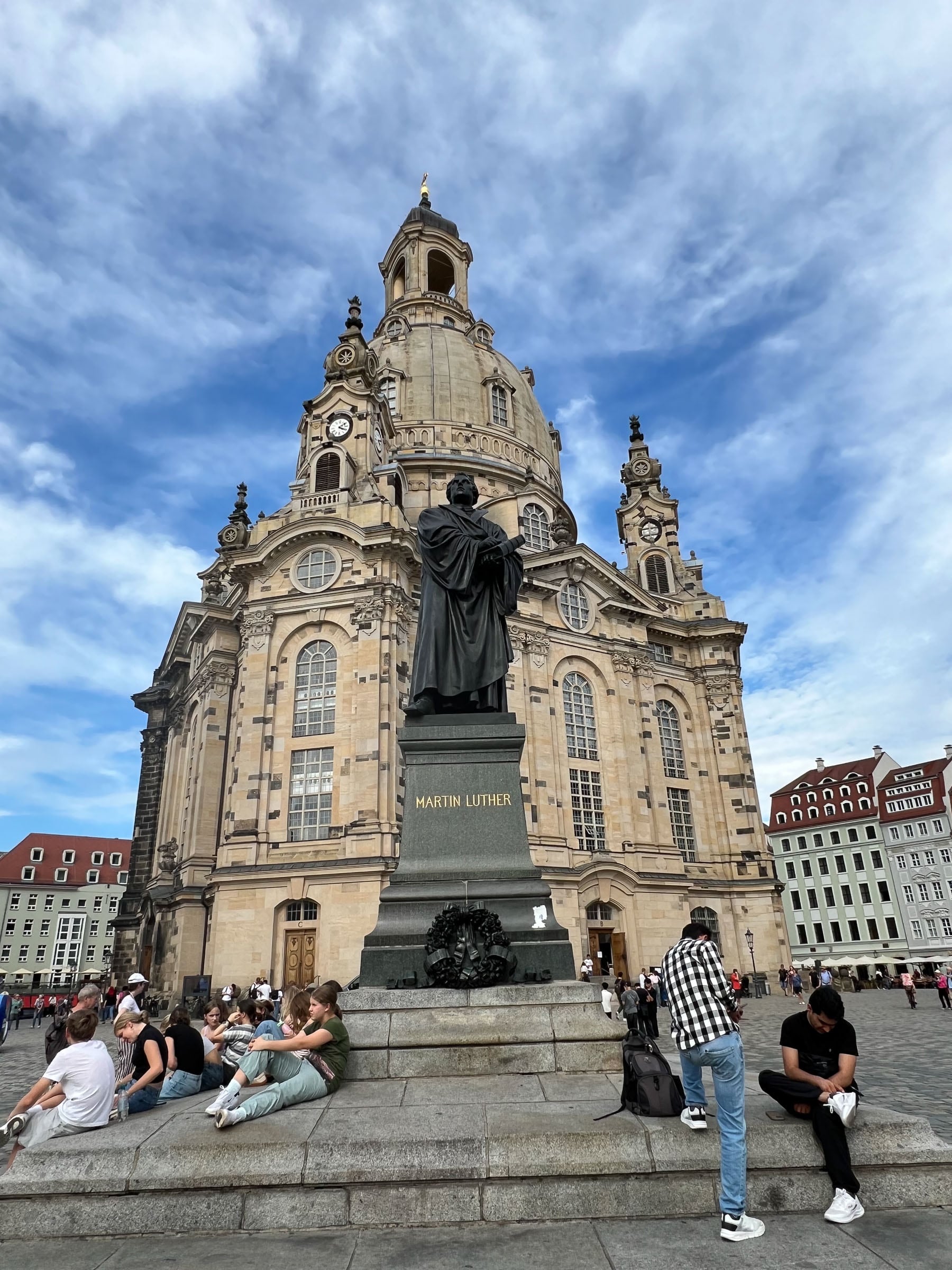
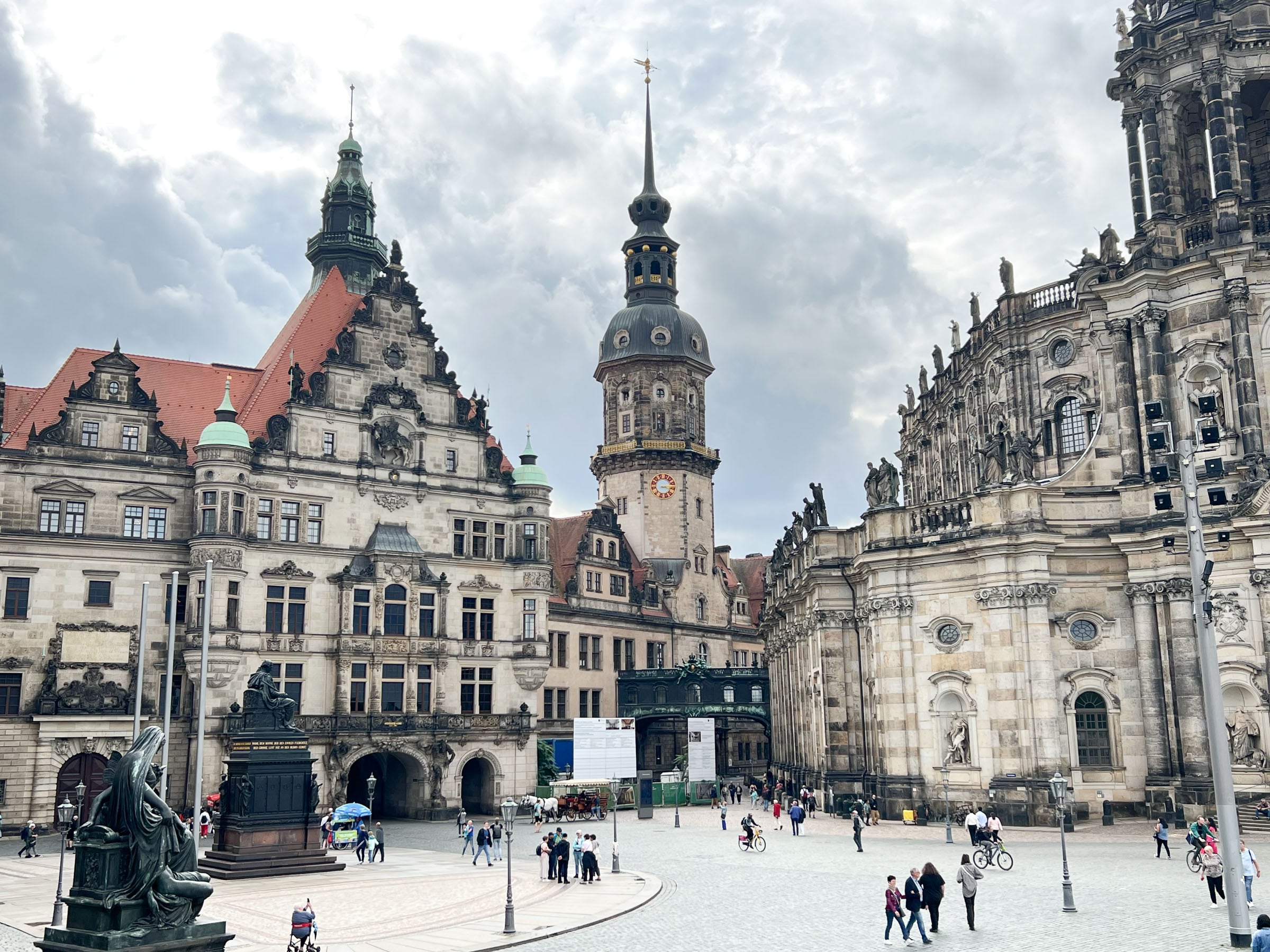
Today, the old center of the city (the Altstadt) didn’t strike us as beautiful so much as grand. Apart from the lovely Frauenkirche, the royal Saxon palaces and churches look bulky, dark (from the local sandstone, which gradually turns black from oxidation), and gaudily decorated. Gaudiest of all is a huge equestrian statue of 18th-century Saxon king Augustus the Strong covered in gold leaf. (President Trump would love it!) The contrast between such Baroque extravagance and the spare postwar Communist East German architecture, sometimes on the same street, is a reminder of Dresden’s long and varied past.
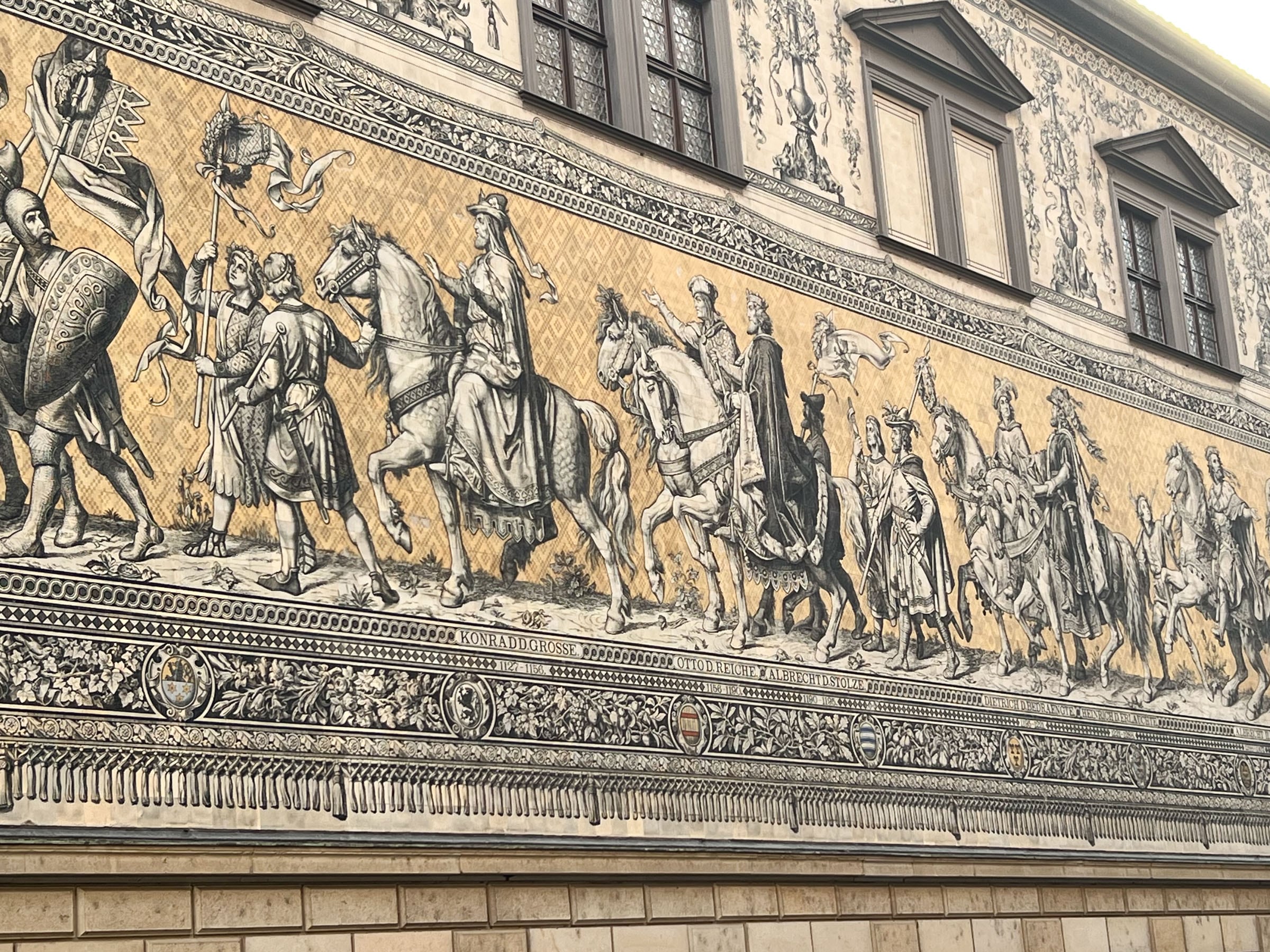
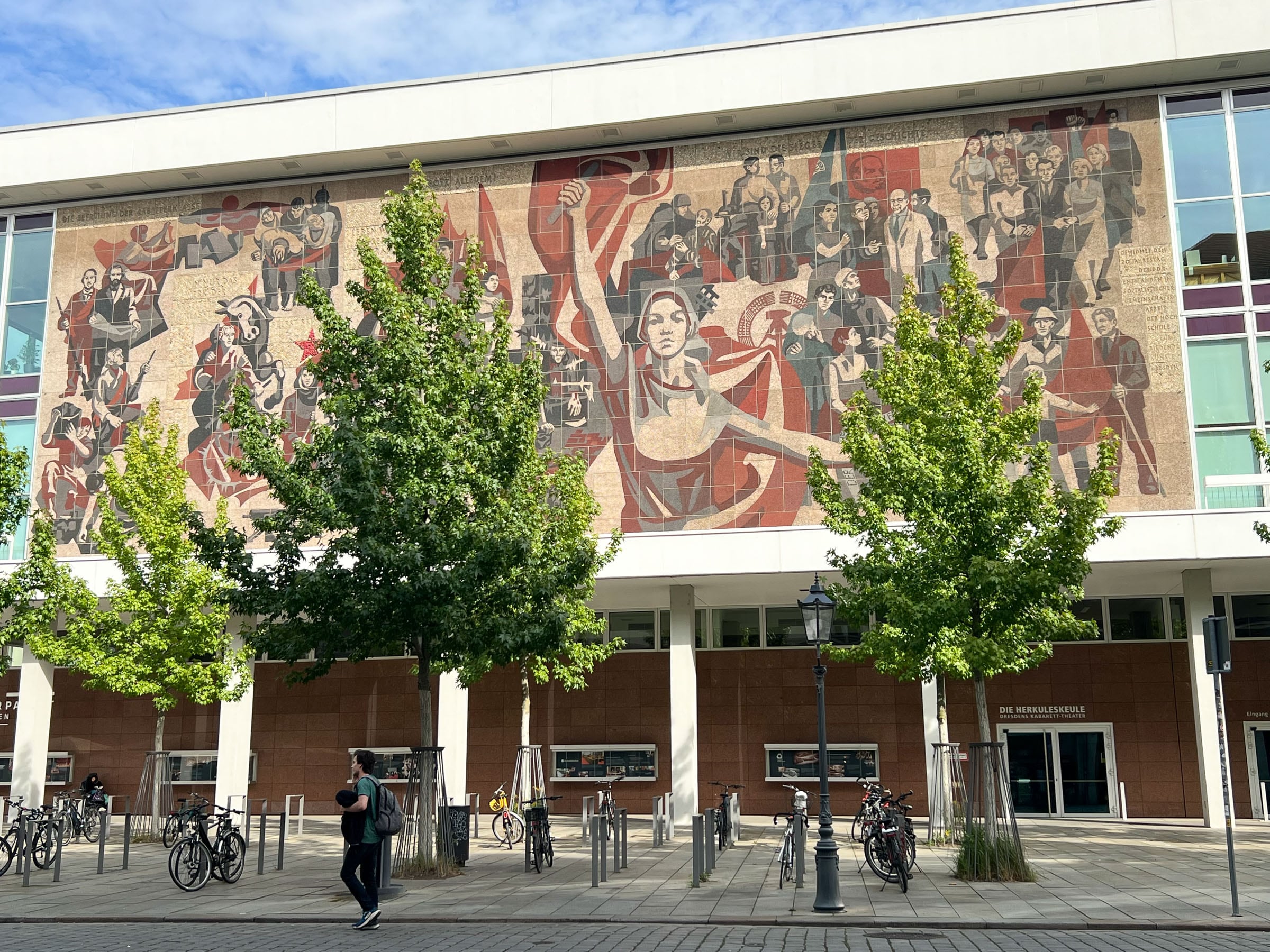
On the other side of the Elbe River from the Altstadt, the “new city” (Neustadt) feels very different. It’s lively in a small-scale, more livable way. Five- to six-story apartment buildings from the turn of the 20th century (rebuilt after the war) line the outer edge of each block, with courtyards in the middle. The ground floors are filled with stores, restaurants, and offices, so it’s easy to run errands on foot or on the trams that travel along most of the major streets.
One set of linking courtyards, called Kunsthof Passage, has become a popular destination in the Neustadt. It’s fun and funky, full of interesting cafes and small shops (including a clothing store called Mrs. Hippie that we fell in love with). The sides of the buildings facing the courtyards are painted in bright colors and decorated with mosaics or sculptures or drain pipes of various sizes that make different sounds when it rains.
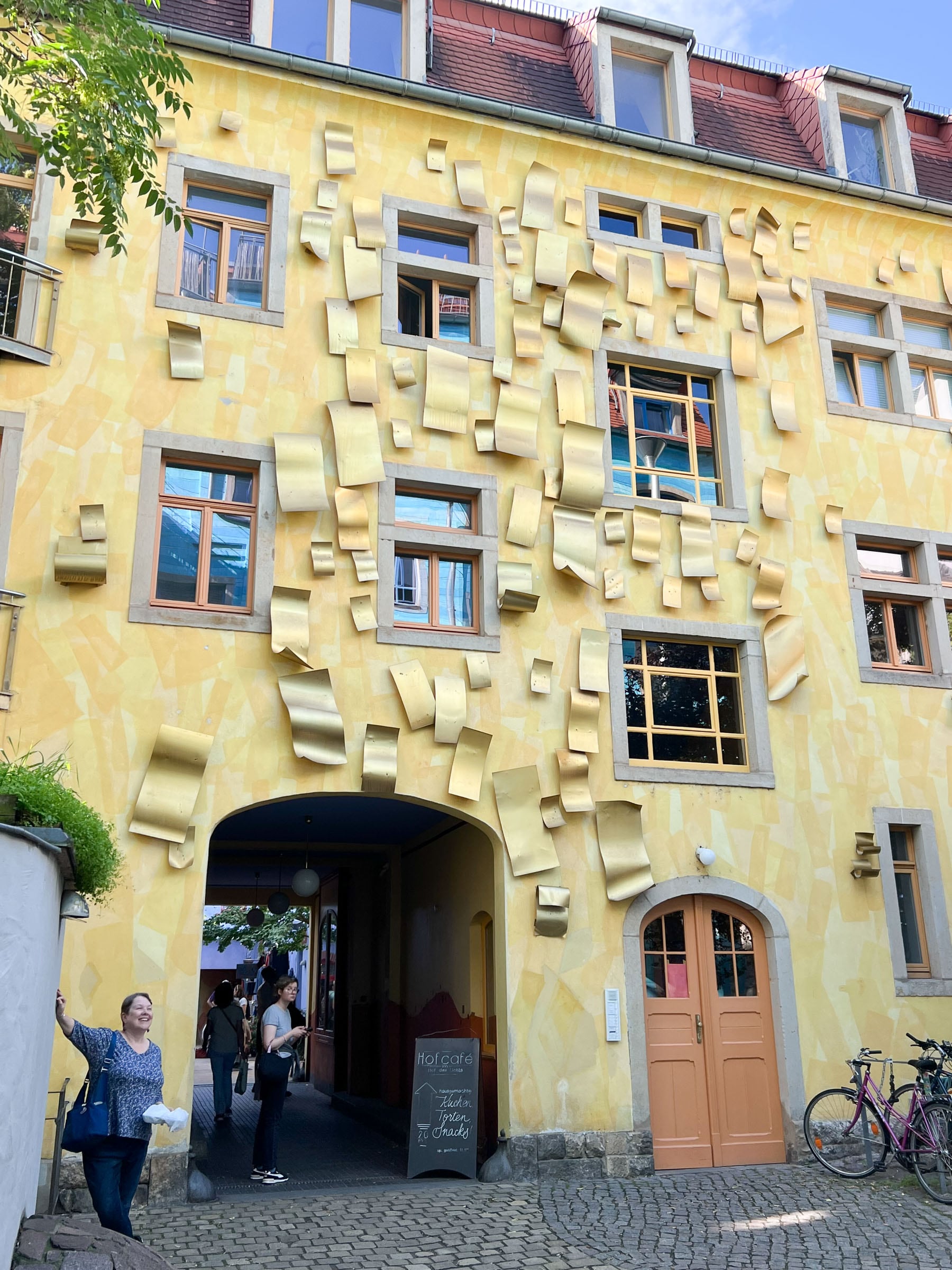

Street art is everywhere in the Neustadt, ranging from stickers and graffiti to big murals. Graffiti (especially anti-communist slogans) was firmly repressed by the old East German government. So after Germany’s reunification, graffiti came roaring back to life as a form of free expression. Since then, it has grown into a flourishing street art scene, which is widely accepted as long as it doesn’t touch historic buildings or monuments. In the Neustadt, the owners of some buildings commission artists to paint murals on the lower floors to deter graffiti (because taggers tend to respect the work of other artists). So there’s always something interesting to look at as you stroll through the new town.

Despite its urban feel, Dresden is close to nature. On a beautiful sunny day, we traveled by train and bus to a national park about 20 miles from the city in the sandstone mountains on the Elbe River—an area known as Saxon Switzerland. In a part of the park called the Bastei, wind and water have eroded the sandstone into pillars and crags. Their dramatic shapes, set against dark pine woods high above the river, have drawn artists and other visitors for hundreds of years. (The area was first mentioned in a German travel guide in 1797.)
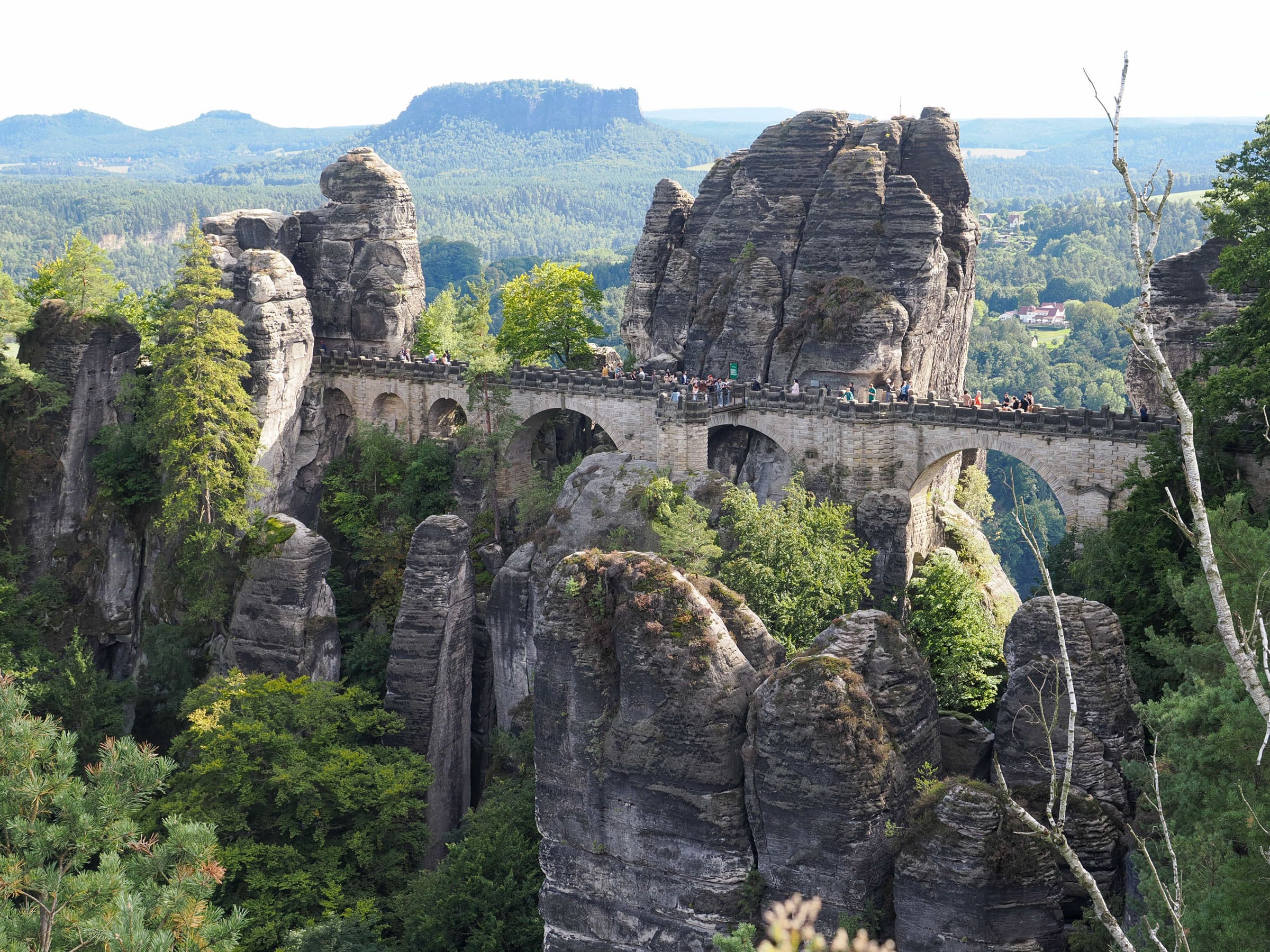
Even with crowds, the Bastei was a beautiful place for a hike and for lunch at the park restaurant on a terrace overlooking the river. We even spotted a pair of peregrine falcons flying above the cliffs—a special thrill for me since I love raptors. As we’ve done before in Switzerland and Austria, Melissa and I marveled at the ability to go from a bustling city center to a wild natural area in an hour or two entirely by public transit. If only we had that kind of infrastructure at home!

